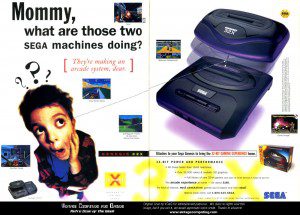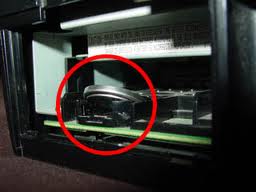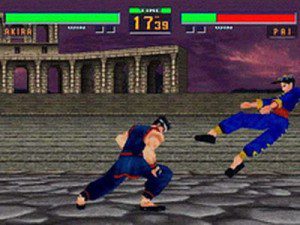Few consoles possess the same enigma and mystery as the Sega Saturn. Sega’s troubled entry into the fifth-generation console wars against the PS1 and the Nintendo 64 had the rare distinction of being a niche console that was well-known to the mainstream gaming public of its era.

In the early 1990’s, the Sega Genesis, after a lackluster start, scored a surprise, albeit short-lived, victory over the Super NES, taking an early lead in the 16-bit console wars in the US. The Genesis’ success was fueled by Sonic the Hedgehog’s 1990’s “attitude” and by its stronger library of American sports titles supplied by a then-unknown Electronic Arts. But by the middle of the decade, Nintendo was fighting back aggressively with games like Super Metroid, Final Fantasy VI, a nearly arcade-perfect version of Mortal Kombat II, and the graphically breathtaking Donkey Kong Country. Meanwhile, high-end consoles like the 3DO and the Atari Jaguar were trying to squeeze out traditional game systems by positioning themselves as multimedia set-top boxes. An even bigger threat loomed on the horizon from Sony, one of the most powerful companies in the world.
In light of this increasingly crowded market, Sega was looking for ways to stay competitive. They attempted this through high-tech add-ons to the hugely popular Genesis, extensive research into next-generation graphics in their arcade division, which wasn’t locked down by the constraints of the traditional console cycle, and finally by looking into potential successors for the Genesis. These efforts had mixed success, and in the process of trying to future-proof itself, Sega made a number of significant mistakes.
Sega’s problems with the Saturn had been seeded during the peak years of the Genesis. In order to try to stay ahead of the competition, Sega had launched the Sega CD add-on for the Genesis. Because of the relatively huge storage capacity of CD-ROMs, 650 MB compared to 8 MB for the largest 16-bit cartridge games, and cheap manufacturing cost, CD-ROM was seen as the hope of the future by video game developers. Many American consumers, including a lot of adults who still saw video games as kids’ toys, had been impressed by the first generation of CD-ROM based “interactive movies” for the PC such as The 7th Guest and Myst. Sega attempted to tap into this market with the Sega CD, but its most successful games ended up being very traditional console games: Sonic CD and the Lunar JRPG series. Its library of “multimedia” titles went ignored and franchises like Street Fighter were conspicuously absent from the Sega CD. When Donkey Kong Country’s SNES release was imminent, Sega also released the 32X add-on, which added the 32-bit Hitachi SH2 chipset, the same chipset that powered the Saturn, to the Genesis and the Sega CD. It was a huge failure and only received a handful of titles. These expensive, short-lived peripherals soured Genesis fans on the Saturn, leading them to look at the PlayStation and the Nintendo 64 instead.

The Saturn was Sega’s final choice as its entry into the 5th-generation console wars, a curious creature boasting two 32-bit Hitachi processors working in tandem and a 2x CD-ROM drive. Because of its awkward dual-CPU setup which was not optimized for the Saturn’s memory limitations, and the fact that it rendered 3-D graphics in quadrilaterals instead of triangles, it was notoriously difficult to develop for. The Saturn launched in 1994 in Japan against Sony’s PlayStation, and at first, the Saturn outsold the upstart, though Nintendo’s 16-bit Super Famicom (Super NES) still reigned supreme. But Sega had clearly been rattled by the competition. Sega of America CEO Tom Kalinske announced a US release date of “Saturnday”, September 2, 1995 for the Saturn. But at the very first E3 in May 1995, Sega announced that the Saturn had been released to select retailers at that very moment. This attempt to steal a march on the competition backfired. Sega had openly displayed its hand to Sony, which was instantly able to undercut the Saturn’s $400 launch price for the launch of the PlayStation in September, it had launched the expensive Saturn in the stagnant spring season, and it had managed to anger several major US retailers, including K-B Toys and Wal-Mart, who had been completely left out of the Saturn’s surprise launch. The Saturn’s headline launch title, Virtua Fighter, suffered from numerous bugs and graphical glitches due to being rushed for the Saturn’s launch, and while the Saturn did have some good launch titles like Panzer Dragoon, the Saturn only managed 80,000 sales by early September, a number eclipsed by the PlayStation within its first week on the market. For the rest of the Saturn’s life, Sega was unable to compete with price drops by Sony and Nintendo. The Saturn’s components were pricey and were nearly impossible to consolidate into more streamlined forms due to the dual-CPU architecture.
Sega played off of the strength of its arcade games and offered game bundles, but it wasn’t enough. Although games like NiGHTS achieved cult status, one of Sega’s most curious omissions with regards to the Saturn was none other than Sonic the Hedgehog, which had driven sales of the Genesis. Sonic had very limited exposure on the Saturn, and none of the few Sonic games on Saturn matched the quality of Super Mario 64. Sega had chosen to bank on Virtua Fighter, but Sony and Nintendo had countered Sega’s arcade strength by making deals with its direct competitors. Namco’s Tekken and Ridge Racer games were headline titles on the PS1, while Midway released arcade versions of Cruis’n USA and Killer Instinct on behalf of Nintendo.
The Saturn was fairly successful in Japan, lasting until 2000, over 2 years after it had been discontinued in the Western world. In addition to hugely popular titles like Sakura Taisen, the Saturn’s Japanese history was characterized by one of the most successful video game marketing campaigns in history, Segata Sanshiro, a judo master who became a well-known icon in Japan.
The famous Segata Sanshiro music video can be seen here.
[tube]http://www.youtube.com/watch?v=joNwYPdEBTc&feature=player_embedded[/tube]
Further adding to the Saturn’s problems were poor relations between Sega of America, its Japanese parent company, and its third-party publishers. Bernie Stolar, COO of Sega of America, had been hired by Sega after overseeing the successful launch of the PlayStation. He became reviled by Saturn fans for consistently rejecting Saturn games that were popular in Japan on the grounds that they wouldn’t be worth localizing for Americans, lacking the graphical punch of popular titles like Resident Evil and Tomb Raider. He also did not believe RPGs would sell in the US based on their somewhat justified reputation as a niche genre, even though the PS1’s sales in both Japan and the US would end up being largely driven by Final Fantasy VII. In particular, Working Designs, Sega’s biggest RPG publisher, was very vocal in their complaints about difficulty in getting games approved by Sega of America. They jumped ship to the PS1, but did end up publishing the Saturn’s final game in the US, Magic Knight Rayearth, in 1998. Stolar had announced the early death of the US Saturn after only three years by declaring that the Saturn was “not our future.” This move served to alienate potential developers for Sega’s next, and final, console – the Dreamcast.
One of the reasons why building a Saturn collection has been so enjoyable is because of the Saturn’s unique library. The Saturn’s position in gaming is a curious one. In the USA, it was a failure, with fewer than 2 million Saturn consoles sold during their US run. Despite this, because it was a Sega console, the American Saturn accumulated more AAA titles than any failed console has a right to claim. In contrast, the Saturn was Sega’s biggest Japanese console success – indeed, its only successful Japanese console, a fact which may surprise American gamers who loved the Genesis and cried when the Dreamcast died an early death. This resulted in the console getting a lot of well-designed RPGs and fighting games, some of which actually made it through Bernie Stolar’s notorious cherry-picking when it came to translating Japanese games. Furthermore, the Saturn’s awkwardly-designed architecture made emulation a challenge that continues today. The source code for many Saturn games, including Panzer Dragoon Saga, has been lost. As a result, while Dreamcast and Genesis titles are readily available on compilation discs and digital distribution platforms, the Saturn’s unique treasures are usually to be found nowhere else. The Saturn is home to some of the most storied rarities in video gaming, including Shining Force III, Panzer Dragoon Saga, and Radiant Silvergun. Because the Saturn was such a poor seller, many of its games can easily be found in near-mint condition from reputable online sellers.
Here’s what you’ll need for your Saturn collection:
A Sega Saturn console. Saturns are increasingly hard to find. A Saturn in good condition with controllers and AV cables usually sells for about $50. Chances are you’ll have to get yours from either eBay or Amazon, so be sure and go with a reputable seller with a lot of positive feedback. You’ll also need to shop around if you want to use a RCA composite video cable instead of a RFU adapter. Saturn AV cables only work with the Saturn. Either a US or a Japanese Saturn will work just fine, thanks to the Action Replay Plus (see below).
Controllers. Saturn controllers aren’t expensive and are easier to find than other Saturn accessories, but the 3-D Saturn controller is a must for games like NiGHTS. Most used game specialty stores like Vintage Stock/Movie Trader in Oklahoma and Texas, for example, will sell original Saturn controllers as well as third-party sticks for the Saturn.

A watch battery. One of the quirks of the Saturn is that, while you can buy cartridges that have rewritable memory for saving games, unlike with PS1 memory cards, most Saturn games can’t save directly to the cartridge. The data must be transferred from the Saturn’s on-board RAM, powered by a CR2032 3-volt watch battery, to the cartridge. The battery is located in the back of the console on the left side, behind a removable panel. Simply remove the battery by very gently pushing it back and then lifting it out with a fingernail and take it to a jeweler or an electronics seller, who will hook you up with the right replacement. If you don’t have a watch battery, you can still save, but you’ll need to be careful to only reset the Saturn and not turn it off, as the save data will only be retained as long as the Saturn is powered on, then go into the user interface and copy the data from the on-board memory to the cartridge. When you want to resume your game, if you don’t have a working watch battery, you’ll have to manually copy the data from the cartridge onto the onboard memory before starting the game.
An Action Replay Plus. On the Saturn, these devices are nearly as valuable as the console itself. First, they include 4MB of save memory. Second, they include the 4MB RAM expansion necessary to play many Saturn games, including many Capcom fighting games. Finally, and most importantly. the Action Replay bypasses region-locking, which allows any Saturn to play any games from any region (Japan, the USA, or Europe). Since many Saturn games were Japan-only, while many others are easier to find in their Japanese or European versions than in their American versions, any Saturn collector will want this device. The 4MB RAM expansions and 4MB save cartridges can of course be bought separately, but there’s no reason to do so when the Action Replay does everything. This device also makes the Saturn one of the easiest consoles to mod for imports, as you don’t have to physically mutilate it by installing a mod chip. The Action Replay Plus generally goes for $30-40 brand-new.

Getting the Action Replay (or another cartridge) to work takes a bit of doing. You’ll have to plug the cartridge in and then turn on the machine to see if it works. If it doesn’t, withdraw the cartridge slightly and try again. You will eventually get it to work. Once you’ve found a position that works, don’t move the cartridge anymore, so as to avoid causing permanent damage to the device or to the Saturn’s cartridge slot.
Games. A system usually lives or dies by the strength of its games, and the Saturn had plenty of strong titles for such and underperforming console. The Saturn had a reputation for having the best 2-D graphics of any console until the recent revival of 2-D on the 360 and PS3, many of these games requiring the 4MB RAM expansion to run. However, its 3-D games got better over time, and the Saturn’s last games were able to go head-to-head with the best of the PS1 and N64.
I have enjoyed collecting Saturn games so far, and in the coming weeks, I will be spotlighting the Saturn games I’ve been finding. This will be a new experience for me, since I have only recently become interested in the Saturn, and hopefully it will encourage other people to take a closer look at Sega’s misunderstood and underappreciated 32-bit console.


Another super article! It makes me want to run out and buy an old Saturn system. Of course, that’s kind of unnecessary given the situation…but still!
Hahaha. The system does have plenty of worthy RPGs for you, after all. You’d probably love the Panzer Dragoon series.
Definitely one of my favorite systems of all time. I’m lucky to still have most of my Saturn collection. It’s something I’ll probably never part with.